Power Consumption and Noise
The two systems came with 12V 5A 60W PSUs, but they were different, even though we purchased them from the same seller.
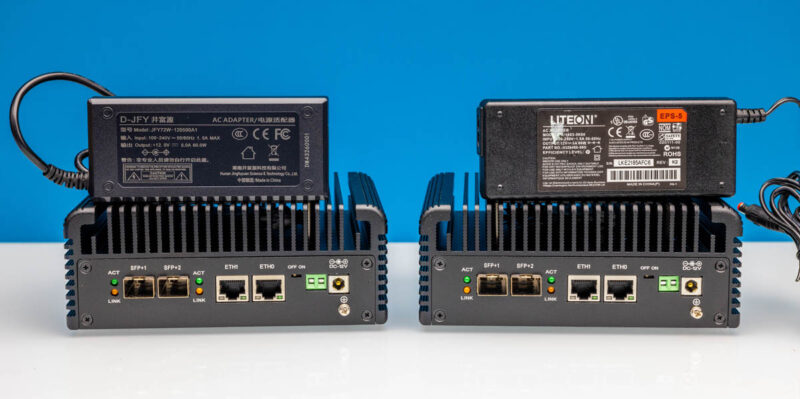
The Intel Core i3-N305 is the D-JFY adapter looks like this, and does not have many safety, regulatory, and compliance ratings.
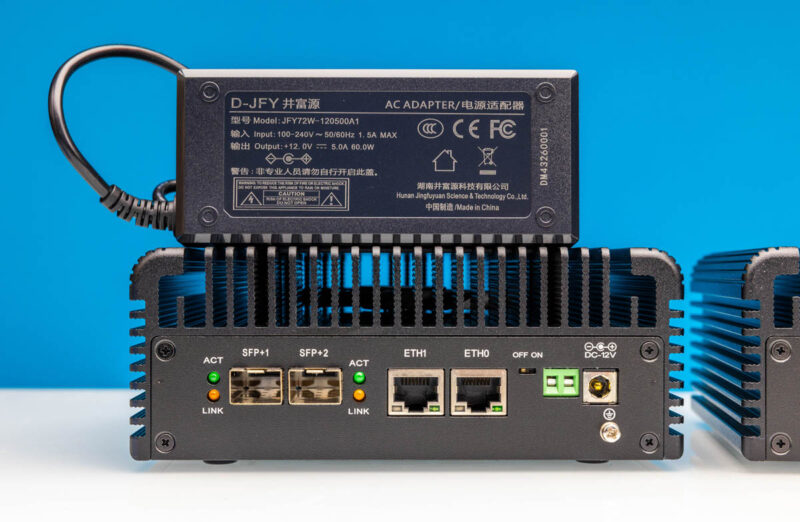
The other adapter looks like this, with a giant green QC sticker.
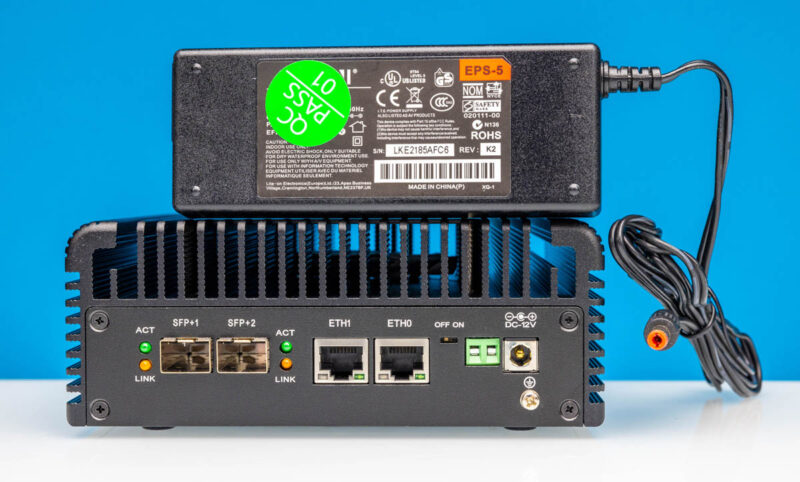
We pulled this off, and it said “LiteOn” with a good-looking label. Something notable is that we recently received a report on the previous unit that LiteOn did not produce the power supply. Trying to find Model A-1603-5K60 online, we did not find much. That QC label was directly over the LiteOn logo and model number which leads us to wonder about the other regulatory markings.
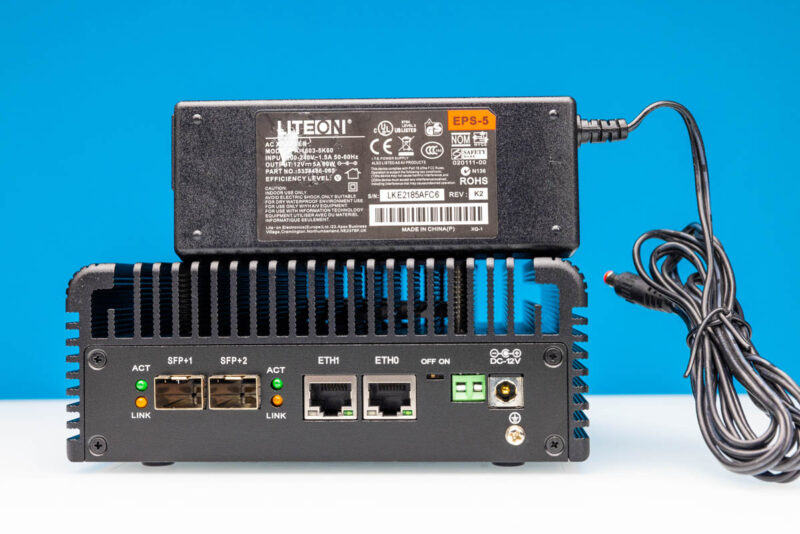
At idle, we saw 5.0W at the package for the N100 system and 14-15W at the wall.
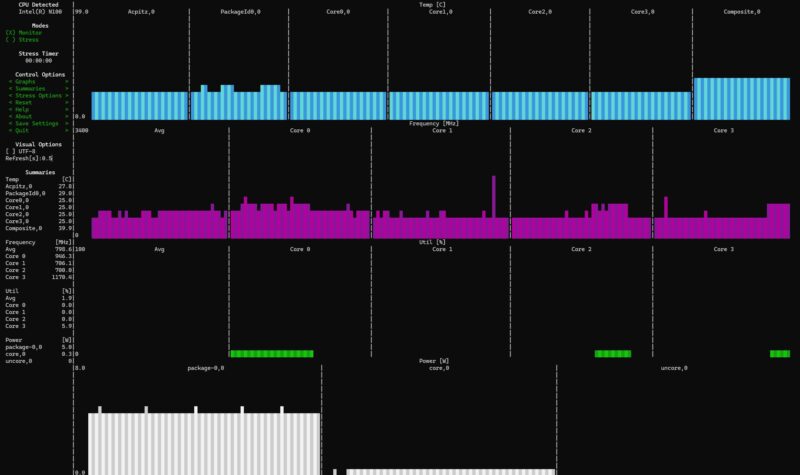
Under load, that was 10.5W at the package and 16-27W at the wall.
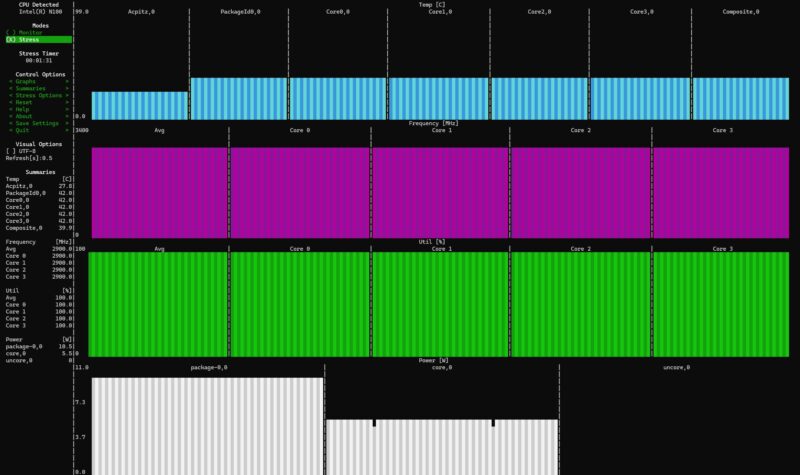
The Core i3-N305 system was a similar 5.0W package at idle and 13-16W at the wall.
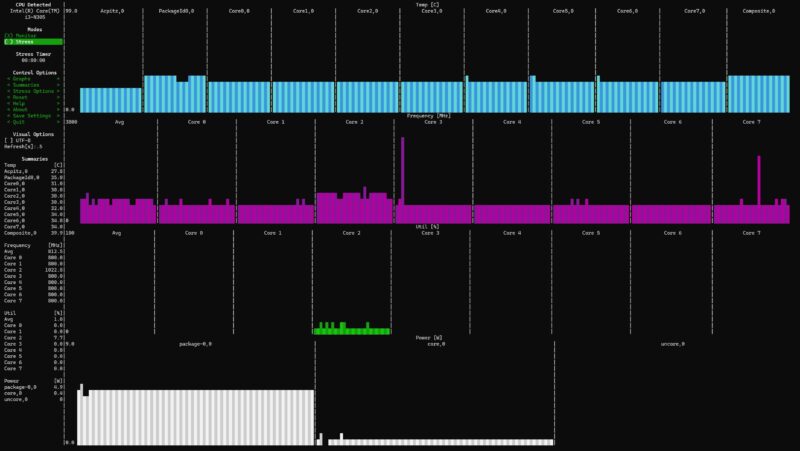
The load was 16.5W at the package and 36-40W at the wall.
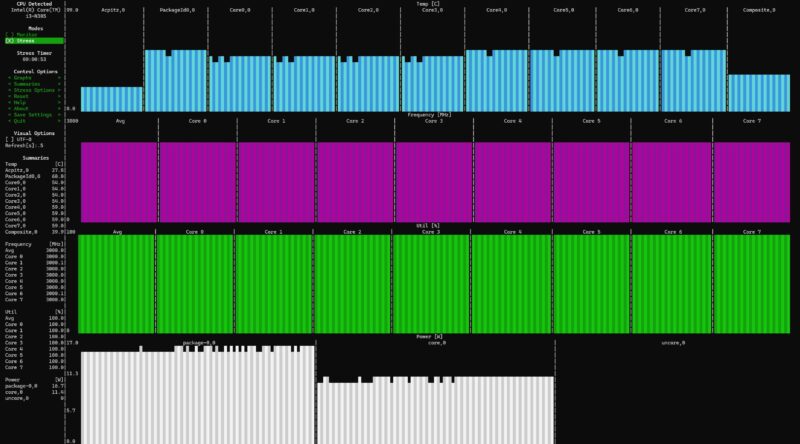
They differed in terms of noise. The N100 was generally around 47dba, while the N305 was 38-40dba. We have no idea why it spun fans so high, but our N100 system was just louder from the second we turned it on.
Key Lessons Learned
To me, the Intel 82599ES is a challenge. On one hand, it is cheap enough to be found in a $200-ish device these days. On the other hand, the PCIe Gen2 NIC really limits performance because we only have nine high-speed I/O lanes. As a result, just having the two Intel i226-V NICs means the best we can get is a PCIe Gen2 x4 link to the 15 year old NIC chip:

With 6 of 9 lanes occupied by the NICs, we only get an x1 link to the M.2 SSD:
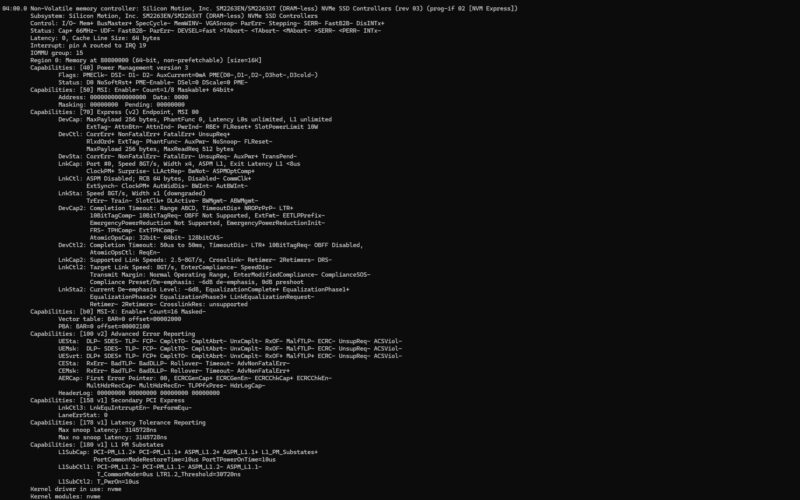
While the N100/ i3-N305 are undoubtedly faster CPUs than the Intel Atom C3758(R), they lack the I/O to be able to handle high-speed devices. If you want more CPU, and just need higher than 2.5GbE speeds or a single port of 10GbE, then the Core i3-N305 is a great option.
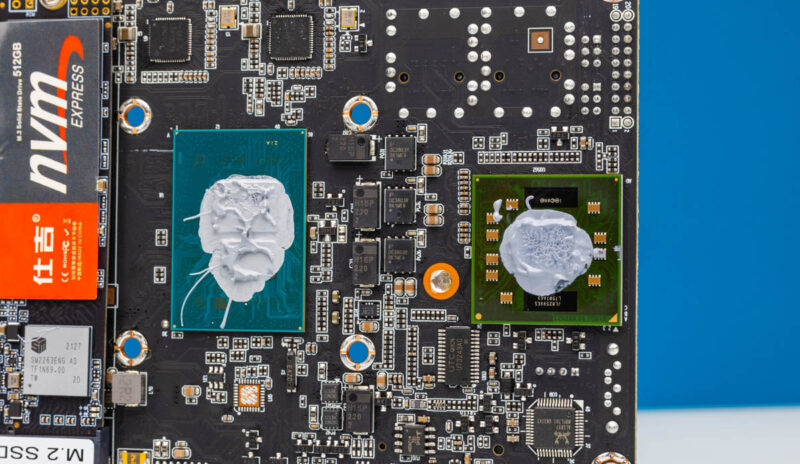
The other item worth noting is that the fan on the i3-N305 unit was great, and 38-40dba is really reasonable, especially for this much performance. On the other hand, the N100 was way too loud. We are not sure if this was just a dud unit, but the temps were reasonable. The fan was just exceptionally loud for such a low-power device.
Final Words
When we recently reviewed The Everything Fanless Home Server and the 1U Rackmount version, some commented on the N100/ N305 versions being better. From a CPU perspective (excluding Intel QAT for crypto/ compression offload), the Alder Lake-N platforms are undoubtedly faster. From a connectivity perspective, the Intel Atom C3758/ C3758R is significantly better. This was a good reminder that even if a system has network ports, it may not be able to run them at top speeds, especially if they are using a 15 year old NIC and the platform has limited I/O.
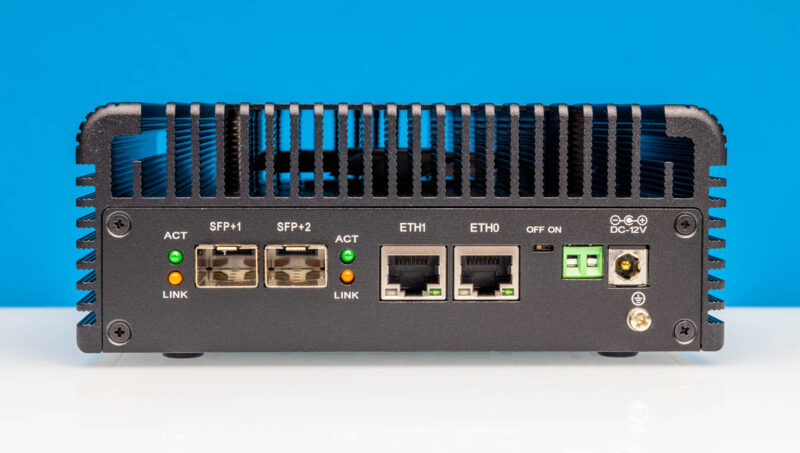
The fan was great on the N305 version but not good on the N100 version. We would be tempted to replace the power supplies for either of these units. At $200-205 for the N100 version, it is certainly cheap. For many, we can see how platforms like these that are less costly can just be better based on the price. If you are in that camp, then these might be interesting options.
Where to Buy
We purchased these on AliExpress here:
- N100 Version (AliExpress Affiliate)
- Core i3-N305 Version (AliExpress Affiliate)




I’m surprised there was no mention of the awful TIM application.
I would honestly guess that out of the system power, 5w+ is the old 85299ES controller. They were not known to be power efficient.
This is so close, yet so far. I haven’t seen a lot of new N305 systems come out since last year when STH first covered them. Been hoping Protectli or one of the other vendors would have some system refreshes. But so far, nothing.
A modern 10GbE/Multi-GbE dual-port would be fantastic, and exactly what I need.
Check my post in the network forum from my build containing the n-305 unit. I bet the fan is loud because the vendor plugged into wrong location. (Fan2)
Can you benchmark with in band ecc enabled?
PCIe gen 2 is 4 Gb/s throughput per lane. 16 Gbps is all you’re going to get in x4… Doesn’t matter how old the chip is you attach to it.
Interesting product, but the fact it uses a 15-year-old NIC means that it’s essentially manufactured e-waste. Combining a low power device with a NIC that’s known to consume a lot of power (relative to newer NICs) isn’t great.
I’ve been looking into these heavily since this review came out. I recently found similar versions on aliexpress but with higher model CPUs (like i3-1215u) that have more PCIe lanes (20 vs 9) which in theory should resolve the NIC bandwidth issues. Search for “BKHD 2024 Mini PC 4*RJ45 With 2*10G SFP”
Still the same old NIC chip with a couple watts higher usage and the CPUs themselves will peak at higher wattages (with higher perf). Idle should not be too much more than the N100/300 versions. Also many of them use dual channel DDR4 so similar bandwidth but reduced cost for a given capacity. I have not bought one yet but very tempted. I’d be set if I could find a mini-ITX version with a bunch of SATA ports (there are some N100/300 boards like this).
I’d been hoping for a clear winner for a late 2024 build of a router/firewall and unfortunately this does not yet seem to be it.
Hi at 19:05 of the YT you show a lot of the unit disassembled and there seems to be a small gap between the upper case and the m.2 drive. Do you or anyone else here have a recommendation for active or passive cooling of the drive? Is there enough reasonable space for a thermal pad or is there a heatsink angle?
Thanks in advance
As a second thought an external SSD might not be a bad idea for my usage. I’m planning on using this as an OPNsense firewall/router only.
YT timestamp of where I believe the gap is
https://youtu.be/Z-3ZjMSEEc8?si=s9zmYsb_b2fe8lUl&t=1084
imgur from the yt video
https://imgur.com/pSkaNMP
@Patrick
Do you still have the n305 model? If so, could you check the CSM BIOS settings and confirm if the network stack is set to Do Not Launch, Legacy, or UEFI.
I bought one with the intent of using it as a firewall, Ive not been able to get the 2.5GB NICs to connect to *anything*; switches or ONT. And now, on reboot… the OS cant see either 2,5GB NIC….